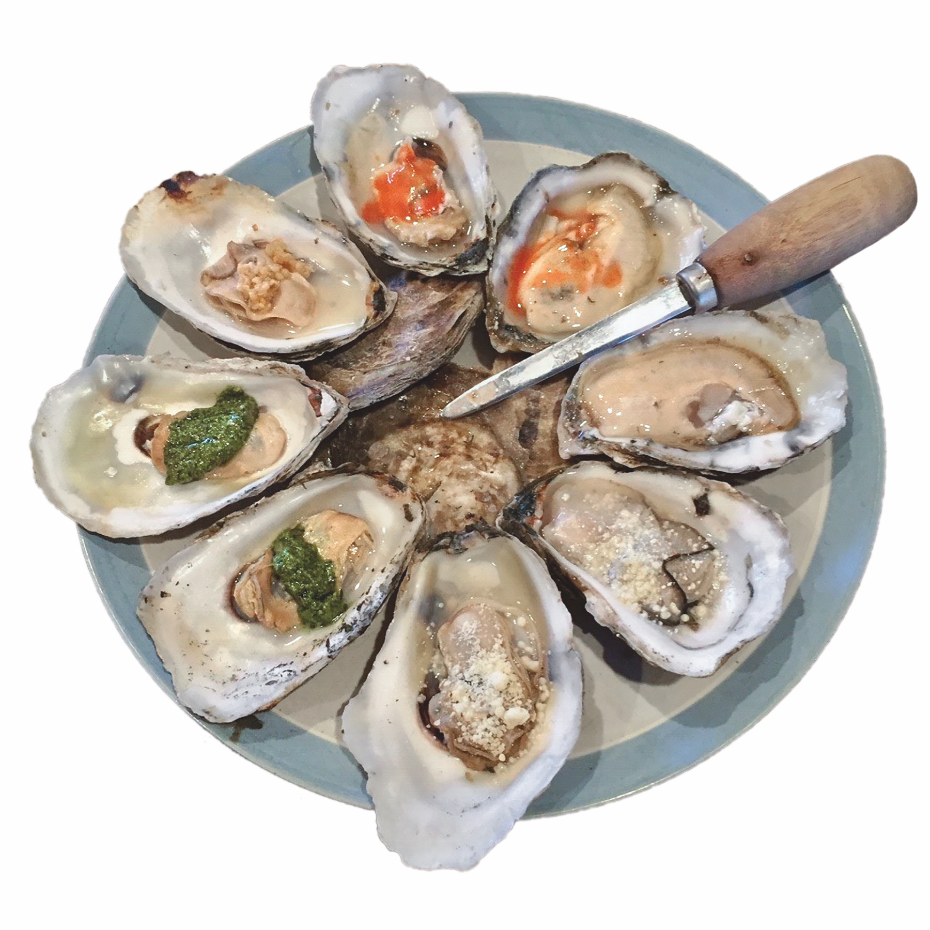
Grilling brings out the briny goodness of local oysters
Intro By Pam George
From the September 2020 issue

Ed Hale was a marine science student at Stockton University — located about a half-hour from Atlantic City — when he took a keen interest in oysters.
“Oyster reefs are highly productive estuarine environments that host high concentrations of fish with high diversity,” says the Ashland, N.J., native. “So, enhancing oyster populations through reef-building and studying oyster recruitment became a research interest of mine.”
Today, oysters are part of Hale’s everyday life. He is the fisheries and aquaculture specialist for the University of Delaware Sea Grant Program. Recently, Hale has been helping oyster farms and other seafood suppliers affected by coronavirus-related shutdowns. Many have had to pivot after losing domestic and foreign wholesales markets. (To find a supplier who will sell direct to consumers, visit deseagrant.org/de-seafood-suppliers. By law, you must buy a whole fish. You can also buy oysters, scallops and other local products.)
Hale acknowledges that many people are skittish about cooking seafood. “I think it stems more from a lack of exposure,” he notes. “I think many folks are accustomed to eating prepackaged poultry, pig and beef products.” They don’t know what to do when faced with a whole fish or even a fillet.
Relax, Hale urges. “Preparing seafood, in my opinion, is usually fairly easy.”
To help, Sea Grant has a link to recipes. Hale supplied instructions for grilled oysters. “I have spent my career trying to learn about fisheries, and I’m sure I picked the recipe up from someone in the field — but I can’t remember,” he says.
He buys oysters from farms in the inland bays, many of which started in 2018 as part of the state’s aquaculture initiative. “The inland bays oysters have a high salt content because of the higher salinity water in which they are held,” he explains. “For most folks, this briny flavor is appreciated.”
You can add butter, cocktail sauce, mignonette sauce or pesto. As for Hale, he likes bubbles: “I prefer to eat my shellfish — both raw and off the grill — accompanied with a cold beer. It’s one of my favorite meals: simple, easy and to the point.”
GRILLED OYSTERS
(Serves as many as you want for an appetizer or main dish. Hale usually sets some aside before cooking for oysters on the half shell.)
STEP 1 Discard oysters that have open shells, which means the organism has died.
STEP 2 Scrub the shells to remove loose debris.
STEP 3 Set the oysters’ cup (the curved side) down on the grill.
STEP 4 Cover and cook on medium-to-medium-high heat until the shells open. Note that oysters do not open as wide as clams. An oyster is open if you can easily fit a knife or tongs in the shell. Begin checking at five minutes.
STEP 5 Remove the oysters from the heat. Use tongs to pry the hinge apart.
STEP 6 Serve with lemons or your preferred topping.




